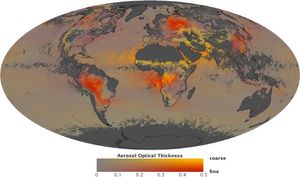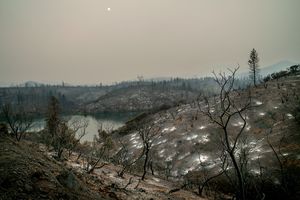Earth Stories
Filters

NASA uses satellites, ground measurements, and powerful computer models to track tiny particles floating in our air called aerosols.

Magic is in the air. No wait… MAGEQ is in the air, featuring scientists from NASA centers across the country who teamed up with the National Oceanic and Atmospheric Administration (NOAA), the University of Maryland Baltimore County, and several other…

When wildfires scorch a landscape, the flames are just the beginning. NASA is helping U.S. communities foresee and prepare for what can follow: mudslides, flash flooding, and contaminated water supplies.

With the end of summer approaching in the Northern Hemisphere, the extent of sea ice in the Arctic shrank to its annual minimum on Sept. 10, according to NASA and the National Snow and Ice Data Center. The total sea…

A massive earthquake and subsequent tsunami off Russia in late July tested an experimental detection system that had deployed a critical component just the day before. A recent tsunami triggered by a magnitude 8.8 earthquake off Russia’s Kamchatka Peninsula sent…

Sea surface height data from the Sentinel-6B satellite, led by NASA and ESA, will help with the development of marine weather forecasts, alerting ships to possible dangers. Because most global trade travels by ship, accurate, timely ocean forecasts are essential.…

When Uruguay faced its worst drought in nearly a century, the nation’s water authority turned to NASA satellite data and trainings to build a reservoir-monitoring tool.

NASA science and American industry have worked hand-in-hand for more than 60 years, transforming novel technologies created with NASA research into commercial products like cochlear implants, memory-foam mattresses, and more. Now, a NASA-funded device for probing the interior of storm…

Thousands of Americans are impacted each summer by excessive heat and humidity, some suffering from heat-related illnesses when the body can’t cool itself down. Data from NASA satellites could help local governments reduce the sweltering risks, thanks to a collaboration…

NASA's Psyche spacecraft captured images of Earth and our Moon from about 180 million miles (290 kilometers) away in July 2025.


























